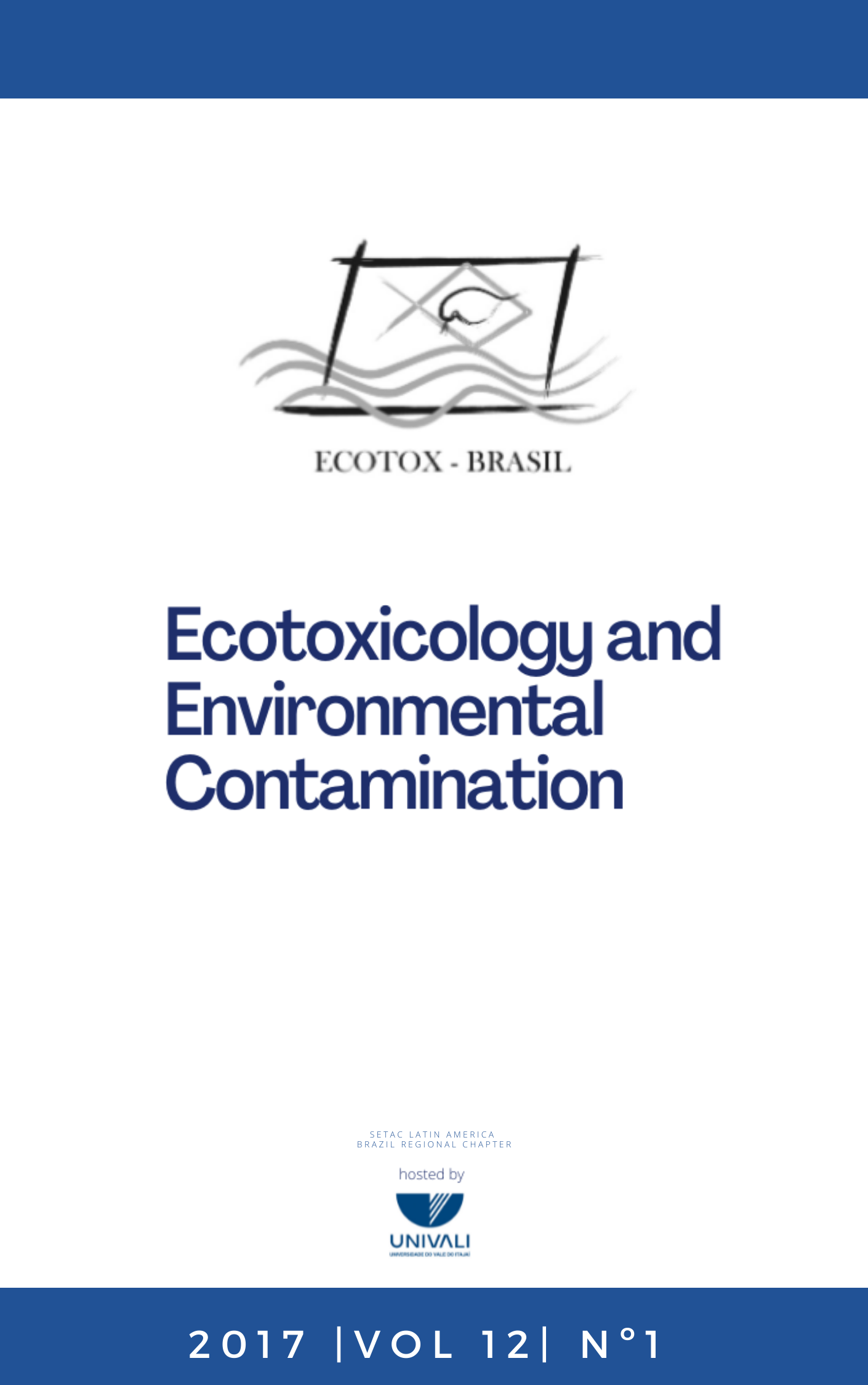Acute toxicity from a prototype equipment of water separation through solar distillation on Daphnia magna Straus, 1820
DOI:
https://doi.org/10.5132/eec.2017.01.09Abstract
The use of sustainable forms of energy should be encouraged, considering the damages that usual sources of energy can cause to our planet, which are often irreversible for decades or centuries. Despite the sun being the main source of energy on Earth, in tropical countries like Brazil, this kind of energy could be better exploited. The present work aims to evaluate the toxicity of purified water and a solution of CuSO4, after decontamination in a prototype equipment of solar distillation of wastewater (due to separation of condensed water from non-volatile substances), in order to test the efficiency of the equipment. Thus, acute toxicity tests were performed with Daphnia magna. The EC50 – 48 h values (the median concentration of a substance that causes effect to fifty percent of organisms) for deionized water and solution of 1 mg L-1 of CuSO4, both after distillation, were 19.61% and 17.08%, respectively. Results indicates that the final samples from the equipment were toxic to D. magna, and therefore, with a potential risk for the freshwater biota. Based on that, it is recommended improvements in the equipment structure, to reduce toxicity, since it occurred probably by contamination of the structures of the equipment itself.
Downloads
Downloads
Published
How to Cite
Issue
Section
License
Copyright © 2006 ECOTOX-Brasil
Copyright notice: It is a condition for publication that manuscripts submitted to this journal have not yet been published and will not be simultaneously submitted or published elsewhere. By submitting a manuscript, the authors agree that copyright for their article is transferred to the Sociedade Brasileira de Ecotoxicologia (ECOTOX-Brasil) if and when the article is accepted for publication. The copyright covers the exclusive rights to reproduce and distribute articles, including reprints, photographic reproductions or any other reproduction of a similar nature, including translations. No part of this publication may be reproduced, stored in a retrieval system or transmitted in any form or by any means, electronic, mechanical, photocopying, recording or otherwise, without permission of the publisher.
Notice: While every effort is made by the EEC, editors and editorial board to see that no inaccurate or misleading data, opinions or statements appear in this journal, they wish to make it clear that the contents of the articles and advertisements published herein are the sole responsibility of the contributors or advertisers concerned. Accordingly, the EEC, the editorial board and editors and their respective employees, officers and agents accept no responsibility or liability whatsoever for the consequences of any inaccurate or misleading data, opinion or statement.




